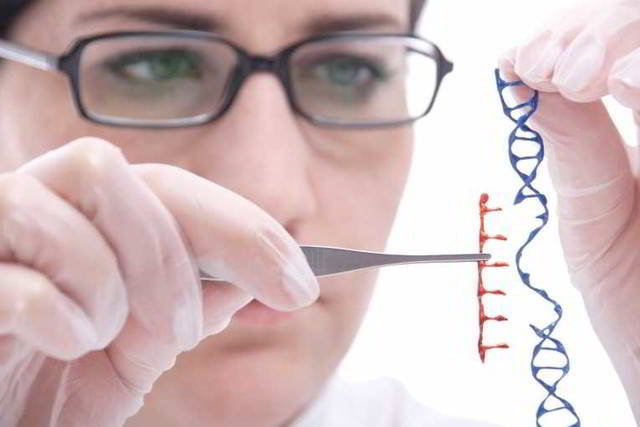






Since the mid-19th century, science has made great strides in the study of genetics, but so far there have been many surprising discoveries about genes and heredity.
The human genome is all of a person’s genetic material that is passed on from generation to generation. The genome contains genes, genes are made of a chemical called DNA. Genes are packaged in chromosomes, chromosomes are located in the nucleus of the cell, each cell nucleus has 23 pairs of chromosomes.
The length of AND is equivalent to 107.8 billion km
Is the length in meters of DNA from one of your cells when each strand is untwisted and stacked. Doing this with all the DNA in the body would form a strand equivalent to 107.8 billion kilometers in length, equal to 150,000 round-trip trips to the moon.
The genome contains about 20,000 genes
The approximate number of genes in the human genome. Our genes give cells information about how to make proteins. According to estimates by scientists, humans can produce nearly 100,000 protein molecules, so they assume the number of human genes is as many. Today, scientists know that some genes contain codes for the synthesis of many proteins. The number of genes in the genome varies from species to species. More complex organisms tend to have more genes. Bacteria have several hundred to several thousand genes, mice also have about 20,000 genes; Roundworms have about 19,000 genes, yeast has about 6000 genes, and tuberculosis bacteria have 4000.


Humans also have 37 “other” genes
This is the number of genes in our “other” genome, or mitochondrial genes. Mitochondria are the power plants of the cell and their function is to participate in the generation of cellular energy. They have established a specialized genome because they are thought to have evolved from bacteria buried by eukaryotic cells (cells containing a nucleus) about 1.5 billion years ago, during the pre-Cambrian period. .
Genetic “letter” has 3.2 billion pairs
3.2 billion is the number of base pairs – or genetic “letter” pairs – that make up the human genome. If all these characters were listed, a person would have to type 60 words per minute, 8 hours a day and in about 50 years to read all the DNA molecules of his body. However, it is the marble lungfish (Protopterus aethiopius) that has the most base pairs – about 133 billion base pairs in their genome.
The DNA of 2 strangers is 99.6% similar
The DNA of any two people on earth is 99.6% similar. But with a difference of 0.4%, this difference represents about 12 million base pairs, which helps explain the variation between individuals, especially if the change is in key genes. Our environment also makes a difference. In addition, the human genome is 7% similar to E.coli bacteria, 21% to worms, 90% to mice and 98% to chimpanzees.
Controlled human genes account for only 1/3
This is the estimated proportion of human genes that are controlled by microRNAs. Genetic “micromanagers” contain only about 22 RNA units called nucleotides, but they can block a gene from producing the protein it encodes. Scientists have identified hundreds of human microRNAs and link disruption in some of them to certain types of cancer.
Other DNA accounts for 98%
More than 98% of our genome is non-coding DNA – meaning this DNA does not contain the information to make proteins. Only about 2% of genes encode proteins. Today, scientists have discovered the role of these “junk DNA” in helping organize the DNA in the nucleus of cells and helping to turn protein-coding genes on or off.
The chromosome in the human nucleus is 47 .
Most human cells have 46 chromosomes, but sometimes, during cell division, something goes wrong which results in too few or too many chromosomes. When this happens, in the egg or sperm cells, the child may have some chromosomal abnormalities. People with Down syndrome have an extra copy of chromosome 21, one of the smallest chromosomes in the genome.
The human genome was discovered in 1953
On February 28, 1953, two scientists Francis Crick and James Watson discovered the structure of DNA. That structure is a “double helix” that can individually “unzip” into two long strands to make copies of itself. Watson and Crick were awarded the 1962 Nobel Prize for this discovery.
Source: https://suckhoedoisong.vn/